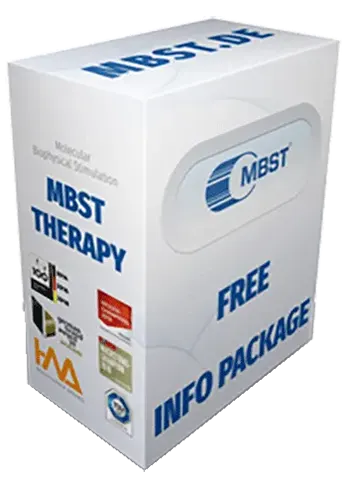More and more professional and high performance athletes trust in MBST therapy
The physical performance of the professional athlete is his resource and is also of special importance for the clubs. This is why more and more doctors today are using MBST therapy. In Germany’s premier leagues of men (football, basketball, ice hockey, handball), around 80% of the players got injured at least once during the seasib 2014/2015. This amounts to 75,000 days of downtime. Statistically, the clubs had to do without players for more than 200 years due to injuries (Dr. Thomas Henke, arag-sport.de). According to the Verwaltungs-Berufsgenossenschaft (VBG), the accident rate in professional sports is more than 2,000 accidents per 1,000 employees per year. This means that on average at least two reportable accidents at work occur per athlete per year. The Deutsche Gesellschaft für Arbeitsmedizin und Umweltmedizin (German Society for Occupational and Environmental Medicine – DGAUM) found out that 66% of all accidents in professional sports in 2013 happened in soccer playing.
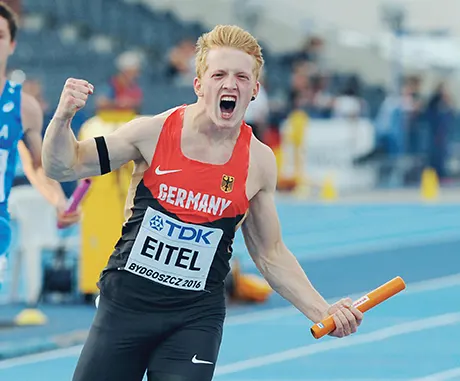
Top athletes have frequent health problems
Daily training sessions and many competitions cause health problems that require treatment. Professional athletes are constantly exploring the limits of their capabilities and injuries are not uncommon. The next competition, the next match is what counts, and for the athlete and the whole team it is important to be fit in time for match days. The healthy body is the prerequisite for a top performance.
Return-2-Play ... FASTer!
With decades of practical experience, some doctors in MBST treatment centres help professional and high-performance athletes to improve and maintain their health in the long term. MBST therapy is an important component in the treatment of athletes and is designed to help the highly paid professionals restore their performance capability as quickly as possible. MBST therapy does not include drugs or substances and is not categorized as doping. It is non-invasive and gentle, which is also important for the quick recovery of a top athlete, also postsurgically. In addition, it stands for a sustainable treatment, which, according to the doctors applicating it, may also significantly reduce the risk of relapse, recurrence of injuries or even long-term damages.
MBST therapy is currently used by national and international athletes, clubs and sports physicians. The following case studies present athletes and reports by leading sports physicians, e.g. team physicians, who trust in the MBST therapy and use it successfully for treatments.
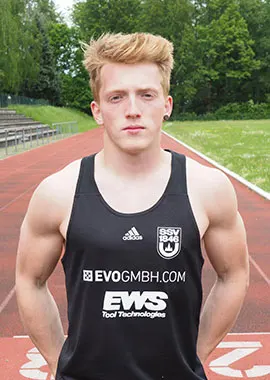
Manuel Eitel ∙ Athletics/decathlon
Bronze medal relay at the U20 world championship in Bydgoszcz, Poland shortly after ankle injury
Dear MBST-Team!
Six weeks ago I suffered a severe injury to my ankle when jumping on one leg. I was optimistic to receive the best treatment possible and that our team of doctors and physiotherapists would get me fit again pretty fast.
But when my doctor Christoph Buck told me about MBST therapy that uses therapeutical magnetic resonance, I did not think that the therapy would be so good and so professional.
My name is Manuel Eitel and I am decathlete at the SSV Ulm. My personal best is 7,717 points. Last year, this was rank 1 in Germany and rank 4 in the world. I have won several German championship awards in combination and long jump and several rank 3 placements in hurdles and 100-metres race.
In 2016, my goal was to win a medal at the World Championship in Bydgoszcz (POL) at my last participation in U20 competition. Qualification took place in may and june. This is why a fast recovery was so important for me.
I started the MBST treatment with a definite swelling of the ankle and some restrictions in daily movements. Only basic training was possible.
MBST therapy lasted for 9 days, 1 hour each day. After only a few days I felt the effect of the improved healing processes. After these 9 days the swelling had subsided considerably and more and more movements were possible free of complaints.
Finally I could start with the real preparation for the competition. MBST made it possible that I could start training in time and thus improved my chances at the world championship!
I am glad that MedTec made my treatment possible and I want to say thank you to everyone! I hope that I won’t need this therapy method soon again but if I did, I’d be happy to profit from the improved healing processes that MBST activates.
With your help I am completely recovering and ready to return to play!
Sporty greetings,
Manuel Eitel
Congratulations, Manuel Eitel!
They were hoping for a medal but the result took them by surprise. The German relay team 4x100 metres of males U20 won the bronze medal in Bydgoszcz (Polen) with new German U20 record: with 39.13 seconds, Roger Gurski, Thomas Barthel (SC Magdeburg), Niels Torben Giese (SC DHfK Leipzig) and Manuel Eitel (SSV Ulm 1846) achieved a new German record and the first medal in relay U20 for Germany since 1998.
We are very happy to have supported our MBST patient – Manuel Eitel – who could win the bronze medal at his first international championship. Top performance – congratulations ... it is a good feeling to know that MBST could help!
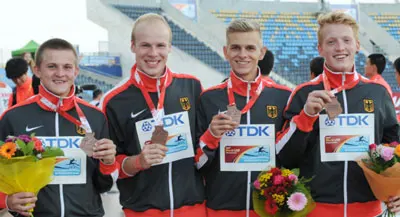
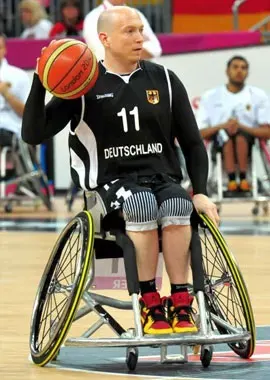
Dirk Passiwan ∙ Wheelchairbasketball
MBST treatment of drug-induced bone necroses improves quality of life and saves sports career
Thank you – now it is good as it is!
I have suffered from Morbus Crohn since 2000. Unfortunately, the side-effects of the treatment with cortisone were very severe for me. The disease is under control but my body can’t tolerate the high dosage treatment.
As a result I have developed bone necroses in my knee joints since 2006 that force me to use a wheelchair part of the time. In 2012, the same symptoms started to show in my elbow joints.
Besides the problems and restrictions that poses in my daily life, a worsening would have meant not being able to do my favourite hobby, wheelchairbasketball, anymore. This would have menat the end of my career as player in the national team and at the Goldmann Dolphins Trier. Another turning point in my life!
By chance I consulted the orthopedist Dr. Peter Krapf who is a specialist in sports medicine and has long experience in the treatment of these diseases of the joints with alternative methods. The contact with the Wetzlar-based company MedTec gave me hope that with the MBST therapy it might be able to control my necroses and I could at least retain my quality of life as it is. The company was very generous and sponsored my therapy as the health insurance does not cover the innovative treatment yet. The therapy sessions posed no problems. I felt a light tingling but no pain and there was no surgery. A real wonder.
Even another decline of my knee joints last year could be stopped with intense MBST therapy so that at the moment I can put some stress on my knees and even walk, within the scope of my possibilities.
Today, 1.5 years later, the progression of the disease has stopped so I can continue my life as it is now. I have no severe problems with my elbows and knees, not in daily life and not in sports. I can still play in the national wheelchairbasketball team. I have gained new hope and won an improved quality of life. I very much hope that health insurances will accept this treatment soon so that other patients can also profit from this valuable and sensible help.
An effective treatment for those affected. I can only say THANK YOU MBST for this big and fast help once again! Dirk Passiwan
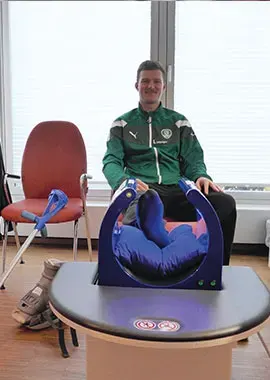
PHILIPP WEBER ∙ HANDBALL
metatarsal fracture ∙ abdominal muscle injury
Philipp Weber suffered an injury of the right foot with a fracture of three tarsal joints, a bone bruise in two further tarsal joints and a rupture of the flexor hallucis brevis tendon on November 5, 2017. Among other therapeutic measures, MBST magnetic resonance therapy was applicated to minimize the downtime. Philipp Weber was fit to play again in time for the World Cup in January 2018.
The back shooter of SC DHfK Leipzig had already been treated very successfully with MBST therapy in 2015 when he had suffered an injury of the abdominal muscle during training. The exact clinical and MRI confirmed diagnosis was rupture of the internus obliquus muscle and partial rupture of the right externus obliquus muscle.
In the course of the third week after the injury, the player was increasingly free from pain even under physical stress situations in the rehabilitation centre, so that training could be intensified. The stress build-up caused no problems, even when handball specific requirements were added. After four weeks, a control MRI March 2, 2015 showed that rupture and partial rupture had healed with scarring. After sport therapeutic tests, the player was able to join in team training again.
On March 11, he was fit to play and was on the field in a league game. No other injury to the abdominal muscle or related injuries occurred in the following time.
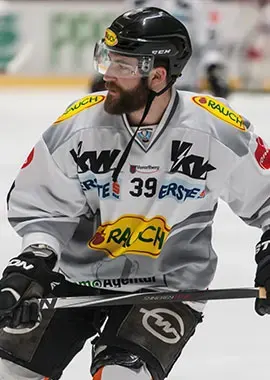
MATT SIDDALL∙ Ice hockey
Severe adductor injury
The 33-year-old leading player of the Dresden Eislöwen suffered a severe adductor injury on October 13. A longer-term downtime of several weeks was deemed necessary.
After the MBST treatment, Siddall was able to return to the team much earlier than expected. "I am not in any pain and I feel good." The doctors also approved of his early return to play. Already on November 17, he was on the ice against the Heilbronner Falken.
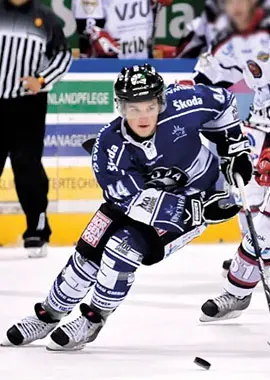
STEVE HANUSCH∙ Ice hockey
Bruise of the Shoulder
The defensive player had only just moved to Dresden for the season 2017/2018 and was expected to lead the Eislöwen with his long experience when he suffered a shoulder injury after a tackle in a match. A bruise of the shoulder was diagnosed with an MRI. Hanusch was not able move his arm more than 45°.
After the second session of the seven-hour treatment series, he was able to drive a car and could move his arm normally again after five days.
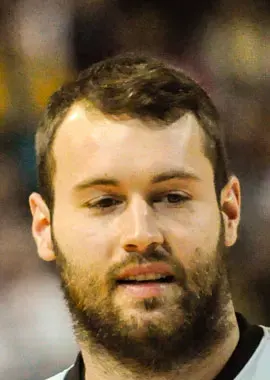
STEFFEN FÄTH ∙ HANDBALL
Bronze medal at the Olympic Games 2016 in Rio de Janeiro after treatment of a broken middle hand bone
Participation in Olympic Games at risk due to rupture of metacarpal bone
Shortly before the Olympic Games, it was likely that the DHB team in Rio de Janeiro would have to do without Steffen Fäth. The European Champion had suffered a fracture of his right metacarpus during training at HSG Wetzlar which was immediately treated surgically in Frankfurt. The doctors prognosticated a downtime of six to eight weeks.
Steffen Fäth was supported by MedTec Medizintechnik GmbH. Therapy aim was the acceleration of the healing process of the middle hand fracture after the operation. Another HSG player, new arrival Philipp Pöter, had also successfully been treated with this treatment method of the Wetzlar-based company after an ankle fracture in mid-March. "Magnetic resonance therapy has proven itself in a wide variety of sports injuries and has significantly shortened the healing process," says HSG team physician Marco Kettrukat. "Steffen’s chances of getting on the Olympic train may increase, but of course there’s no guarantee."
The therapy went well and national coach Dagur Sigurdsson nominated Steffen Fäth for his squad for the Olympic Games. Although he was only able to start training again shortly before his departure, he was back on the field in Rio and with his team won the first Olympic medal of the German handball team since 2004.
Image copyright: Michael Frey (Michael Frey) - Own work, CC BY-SA 3.0
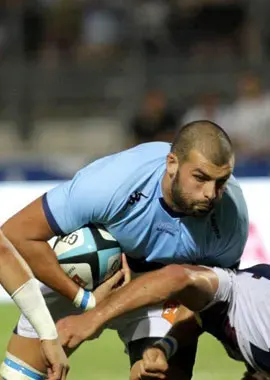
Allan Gravier ∙ Rugby
Cruciate rupture
Symptom-free after 4 sessions of postsurgical MBST treatment
Prognosis: several months of downtime after cruciate rupture
Allan Gravier, rugby player second row France, had to undergo surgery after a rupture of the cruciate ligament on Mai 29. 5 to 6 months of downtime were expected. At the beginning of june, he was able to bend the knee approx 90°. Gravier started MBST therapy on june 9.
Result of MBST treatment
After only the fourth of 7 sessions he was able to bend the knee approx. 130° and Gravier had no more restrictions or complaints. He could resume training after 3 months.
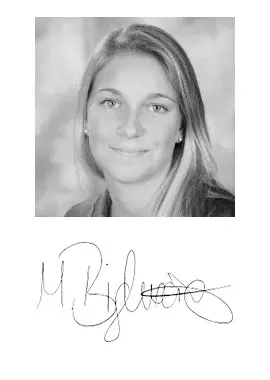
Maraike Biglmaier ∙ Beach tennis
Reconstruction of tendon structure postsurgically
Since april 2016 I have suffered from a tendinitis in the wrist which gravely restricts my activities as professional athlete. In june I had to undergo surgery on my right wrist. In consequence, also my left wrist started to ache because of continuous overstressing. I tried a variety of therapies but my tendons could not regenerate as fast as I wished for.
MBST magnetic resonance therapy helped to regenerate my tendons faster and to restore full functioning. At the moment I am still in the regeneration phase but I am sure that I will be able to fulfill my sports ambitions in international beach tennis again in the near future. Thank you very much for your support.
Best regards,
Maraike Biglmaier
Successful start into the season 2017 for best German beach tennis player
The first season after her long injury downtime started with a great success for Maraike Biglmaier. In all three Caribbean tournaments the player form Berlin and her team mate Patty Diaz were on the top of the podium and Maraike is "super happy that my hand is doing fine and I am back in the game."
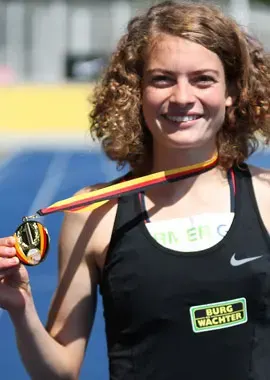
Alina Reh ∙ Athletics/middle- and long-distance
Personal best time over 5,000 metres at the World Championship shortly after MBST treatment of stress fracture
My name is Alina Reh, I am 19 and middle and long distance runner at SSV Ulm. The U20 World Championship in Poland should have been the summit of this season. After qualifying in May I started with the build-up. But in the middle of June, about 5 weeks before the race, I suffered a stress fracture of the left foot. A recovery within 5 weeks seemed impossible, I could hardly walk and my foot was swollen.
My attending team doctor Christoph Buck gave me this MBST therapy device that shall stimulate metabolic processes. The treatment lasted for 9 days, 1 hour each day. I had heard about treatments like this before and was convinced that it would speed-up my healing process. 4 weeks later the pain was gone and I could risk easy training. Up to this moment I had only trained in water and practised aqua-jogging.
Despite the bad news, stress fracture, I did not give up and could compete at the World Championship at July 23. I only hoped to be able to finish the race and could hardly expect more due to my injury. But in the end I ranked 9th in the 5,000 metres race with my personal best time and also had reached German youth record: 15.41 min. I was overwhelmed.
Thank you MBST for speeding-up the healing process after the stress fracture so much that I could walk free of pain during the competition and even afterwards. I highly recommend this treatment! Thank you for your support!! Alina Reh
Image copyright: By indeedous/Wikimedia Commons, Attribution
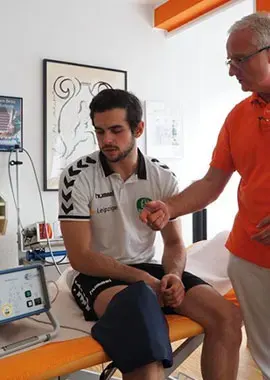
PETER STROSACK ∙ HANDBALL
cartilage defect and bone bruise
Fast return to the team after MBST treatment of cartilage defect and bone bruise
Downtime of unknown length due to cartilage defect and bone bruise
Bad news for SC DHfK Leipzig and right-wing player Peter Strosack. The 22-year-old player was expected to be absent from the team presumably for a number of weeks due to a cartilage defect. Chronic complaints had developed after a collision in the match in Magdeburg on September 11, 2016. MRI imaging showed a cartilage defect as well as a bone bruise of the femural bone. In mid-October no one could say when Strosack would be fit to play again.
Therapies started directly afer the diagnosis. MBST magnetic resonance therapy was chosen with the aim to speed-up the healing processes in Strosack’s knee. DHfK team doctor Dr. René Toussaint had used this treatment repeatedly with good results in the last season, for example to treat Philipp Weber’s rupture of the abdominal muscle and after Philipp Pöter’s fracture of the calf-bone.
Result of MBST therapy
Strosack could return to the field on October 23. His contract with SC Leipzig was renewed early in December until 2019.
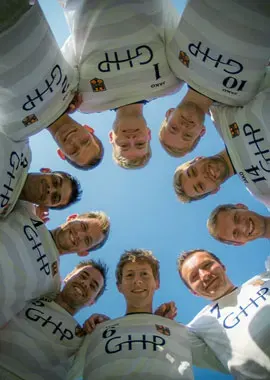
German national team ∙ Fistball
MBST is a standard treatment for German fistball national team
MBST magnetic resonance therapy is part of the medical treatments that the German fistball national team can rely on. Team doctor Dr. Andreas Schmitz has used MBST for years in his own practice and for the team. In 2015, a mobile MBST therapy device was part of the standard equipment for the World Championship in Argentina. In Córdoba, the German team was able to defend their title of 2011.
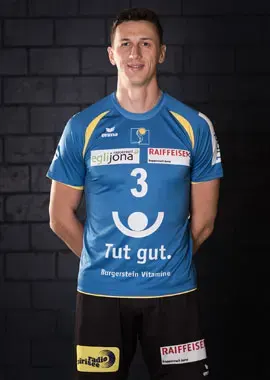
Anatoly Mezhonnov ∙ Volleyball
MBST therapy supports regenerational process of team Top Scorer
1st treatment: Imminent down time before start of the season because of muscular problems
Burgerstein Vitamine Volley Jona had brought the Russian athlete to Switzerland for this season to support the young and relatively unexperienced team. Two weeks before the start of the season Mezhonnev was not able to bend the knee or move sideways due to a strong, increasing pain caused by muscular problems above the knee.
Result of MBST therapy: Mezhonnev was fit for the start of the season and ended up being the top scorer of his team.
2nd treatment: complaints with the knee after cartilage defect
Very early into the season the top scorer complained about problems with the knee that rapidly increased. MRI scans showed a hole in the joint cartilage. MBST was used with the aim of regenerating cartilage cells and closing the hole.
Result: freedom of complaints
Directly after the end of the treatment Mezhonnev reported a pain-reduction. One and a half months later he was free of symptoms.
3rd treatment: acute ligament trauma in the playoffs
Anatoly Mezhonnov suffered a painful ligament trauma of the ankle in the last match of the first playoff round. The next playoff round started 11 days later. The key player was essential for the team and the course of the playoffs.
Result: exceptional playoff matches
Only one week later Mezhonnov could start easy training again. He only avoided jumps in the first two training sessions. For the following matches he was fit again and played exceptional playoffs.
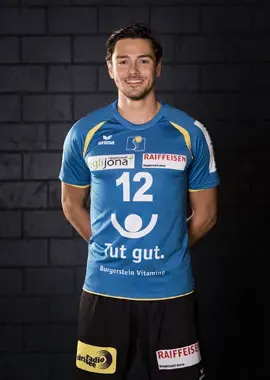
JOEL ROOS ∙ VOLLEYBALL
Inflammation of Biceps tendon
Painful tendinitis after long season
The player complained about a pain in the shoulder after an intensive autumn season that also included many qualification matches with the national team. At last he had to take pain killers for training and competitions. The cause of the pain was tendinitis of the biceps tendon. Joel Roos was treated with 7 treatment units of MBST therapy for muscles and tendons. The pain started to subside after the end of the therapy. Roos could start training and competing shortly afterwards with less pain. About one month after the end of the therapy no more complaints were noticeable.

Valérie Reggel ∙ Athletics/Heptathlon
chronic pain caused by partial rupture of intraarticular ligament
Abortion of season after inefficient therapy attempts
Best Swiss heptathlon athlete Valérie Reggel had to abort the season after suffering a partial rupture of the intraarticular ligament of the elbow. Despite several therapy attempts the complaints became chronic and made it impossible to compete in javelin throw resp. heptathlon. Valerie Reggel was treated with 9 treatment units of MBST therapy for ligaments. 2 months after the treatment Reggel was able to complete several pain-free training sessions. At the beginning the elbow could still be felt under extreme stress but at the start of the next season Reggel was free of complaints. Convinced by the successful therapy Reggel also used MBST to treat a tendinitis of the Achilles tendon in July 2017.

Dominique Schnetzer ∙ Rock’n’roll dancer
Ligament trauma
Participation in the World Championship at risk due to ligament trauma
The 18-year-old Swiss dancer is a member of a successful rock’n’roll team. Her participation in the World Championship in September 2016 in her home town was at risk after an accident in school sports on September 14. Diagnosis: trauma with ligament lesion and rupture from the ankle bone. Schnetzer was treated with 5 treatment units MBST therapy for acute ligament trauma. The participation at the World Championship on September 24 and 25 became possible. Only 10 days after the accident the dancer could get on stage and qualify for the finals. Only after the 3rd show of this day the ankle began to hurt slightly but that posed no restrictions. 2.5 weeks after the accident she was completely fit for this stop and go sport that puts huge stress on the ankles.
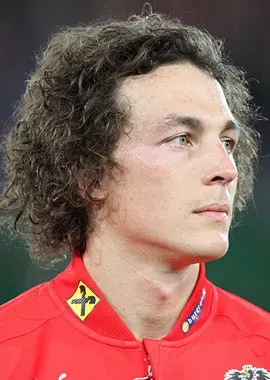
Julian Baumgartlinger∙ Soccer
Accelerated regeneration after meniscal injury
Optimal support in rehabilitation
Austrian soccer player Julian Baumgartlinger had to undergo surgery on the meniscus twice in 2013, followed by a long injury downtime during which the team of Mainz 05 had to do without the experienced midfield player. Baumgartlinger was supported in his regeneration by MedTec Medizintechnik GmbH. Baumgartlinger: "MBST positively supported the healing process in the rehabilitation phase and complemented physiotherapy optimally."
Image copyright: Von Steindy (Diskussion) 12:15, 25 November 2015 (UTC) - own work, CC BY-SA 3.0
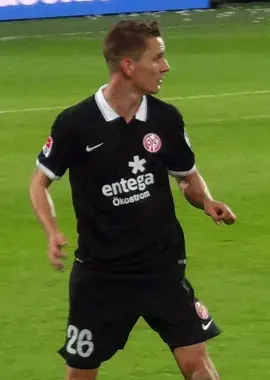
Niko Bungert ∙ Soccer
Reduction of injury lay-off after cruciate rupture and bone bruise
Months of down time for leading player
Niko Bungert is a leader, always fully present on the field, bodily and verbal. He takes control of the match – when he is there. But in the season 2012/13 his team mates of Mainz 05 had to do without their central defender for several months. Bungert had suffered a cruciate rupture in the match versus Fortuna Düsseldorf. He was surprised by the severity of the injury. "I was in no pain, could move and even walked up the stairs in the hospital without crutches . I had expected a cruciate rupture to be more spectacular." Bungert knew that he would have to rest for a while with this diagnosis but he didn’t foresee how long this time would become. After a tight rehabilitation programme he was back on the field after only a few months. At least for a short time. The pain in the knee returned and increased. MRI scans showed a bone bruise – complete healing is necessary for freedom of pain and fitness to play. How long this takes cannot be prognosticated. For Bungert this diagnosis meant an even longer downtime after the long injury lay-off shortly before. Bungert was among other therapies treated with the MBST magnetic resonance therapy that had already helped his team mate Baumgartlinger in the postsurgical treatment after meniscal surgery. Bungert: "MBST helped me to positively influence the healing process in the injury lay-off due to a bone bruise of the knee."

